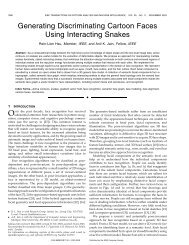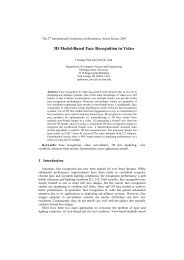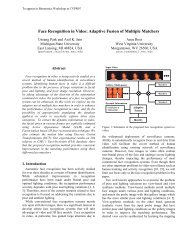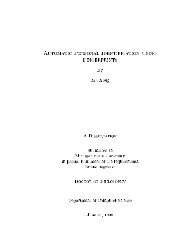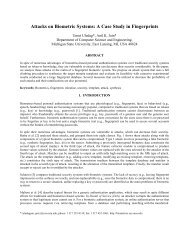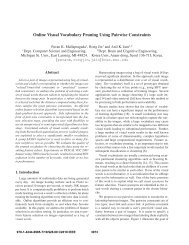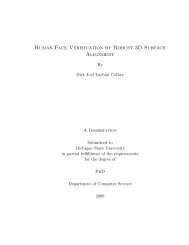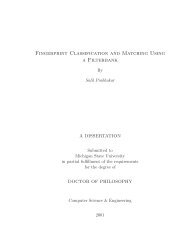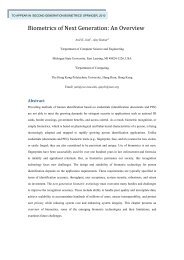Face Detection and Modeling for Recognition - Biometrics Research ...
Face Detection and Modeling for Recognition - Biometrics Research ...
Face Detection and Modeling for Recognition - Biometrics Research ...
Create successful ePaper yourself
Turn your PDF publications into a flip-book with our unique Google optimized e-Paper software.
4.3 Facial Measurements<br />
Facial measurements should include in<strong>for</strong>mation about face shape <strong>and</strong> facial texture.<br />
3D shape in<strong>for</strong>mation can be derived from a stereo pair, a collection of frames in a<br />
video sequence, or shape from shading. It can also be obtained directly from range<br />
data. We use the range database of human faces [174], which was acquired using a<br />
Minolta Vivid 700 digitizer. The digitizer generates a registered 200 × 200 range map<br />
<strong>and</strong> a 400 × 400 color image <strong>for</strong> each acquisition. Figure 4.4 shows a color image<br />
<strong>and</strong> a range map of a frontal view, <strong>and</strong> the texture-mapped appearance from three<br />
different views. The locations of face <strong>and</strong> facial features such as eyes <strong>and</strong> mouth in<br />
the color texture image can be detected by the face detection algorithm described in<br />
Chapter 3 [175] (see Fig. 4.5(a)). The corners of eyes, mouth, <strong>and</strong> nose can be easily<br />
obtained based on the locations of detected eyes <strong>and</strong> mouth. Figure 4.5(b) shows the<br />
detected feature points.<br />
101



